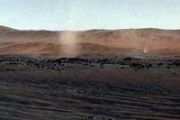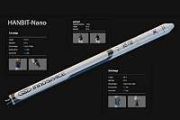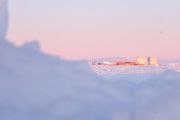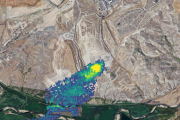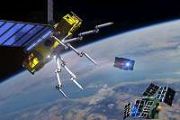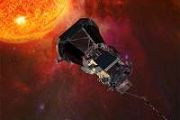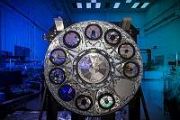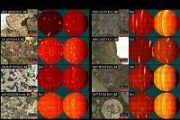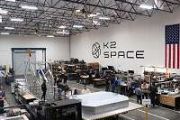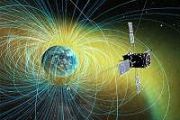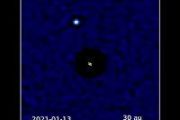
Copernical Team
DESI achieves unprecedented measurement of Universe's expansion
 by Lauren Biron for Berkeley News
Berkeley CA (SPX) Apr 05, 2024
A revolutionary view into the cosmos is now possible thanks to the Dark Energy Spectroscopic Instrument (DESI) and its array of 5,000 robotic observers perched atop a mountaintop telescope. These robotic eyes have made it possible to gaze 11 billion years back in time, offering unprecedented insights into the universe's early day
by Lauren Biron for Berkeley News
Berkeley CA (SPX) Apr 05, 2024
A revolutionary view into the cosmos is now possible thanks to the Dark Energy Spectroscopic Instrument (DESI) and its array of 5,000 robotic observers perched atop a mountaintop telescope. These robotic eyes have made it possible to gaze 11 billion years back in time, offering unprecedented insights into the universe's early day The PI's Perspective: Needles in the Cosmic Haystack
 New Horizons is healthy and speeding across the Kuiper Belt, nearing a distance of 60 times as far from the Sun as Earth is!
The spacecraft continues to collect round-the-clock data on our Sun's cocoon in the galaxy, called the heliosphere, and transmit that data, as well as the final data from our flyby of Kuiper Belt object (KBO) Arrokoth, back to Earth.
Since I last wrote in this
New Horizons is healthy and speeding across the Kuiper Belt, nearing a distance of 60 times as far from the Sun as Earth is!
The spacecraft continues to collect round-the-clock data on our Sun's cocoon in the galaxy, called the heliosphere, and transmit that data, as well as the final data from our flyby of Kuiper Belt object (KBO) Arrokoth, back to Earth.
Since I last wrote in this NEOWISE Achieves a Decade of Asteroid and Comet Surveillance from Space
 Marking a significant milestone, NASA's NEOWISE mission has unveiled its tenth year of data collection, showcasing an ongoing infrared survey that sheds light on the dynamic changes of celestial bodies over extended periods. This survey, pivotal in the realm of time-domain astronomy, aids in observing the fluctuation in brightness of distant stars and the activities of remote black holes. Specif
Marking a significant milestone, NASA's NEOWISE mission has unveiled its tenth year of data collection, showcasing an ongoing infrared survey that sheds light on the dynamic changes of celestial bodies over extended periods. This survey, pivotal in the realm of time-domain astronomy, aids in observing the fluctuation in brightness of distant stars and the activities of remote black holes. Specif Voyager 1's Data Transmission Issue Traced to Memory Corruption, Fix in Progress
 After months of receiving gibberish data from Voyager 1, NASA engineers have isolated the problem to a corrupted memory segment in the spacecraft's computer. The anomaly, affecting the flight data subsystem (FDS)-integral for preparing the spacecraft's science and engineering data for Earth transmission-has hindered readable data transmissions since November last year.
In a diagnostic move
After months of receiving gibberish data from Voyager 1, NASA engineers have isolated the problem to a corrupted memory segment in the spacecraft's computer. The anomaly, affecting the flight data subsystem (FDS)-integral for preparing the spacecraft's science and engineering data for Earth transmission-has hindered readable data transmissions since November last year.
In a diagnostic move First ‘glory’ on hellish distant world?
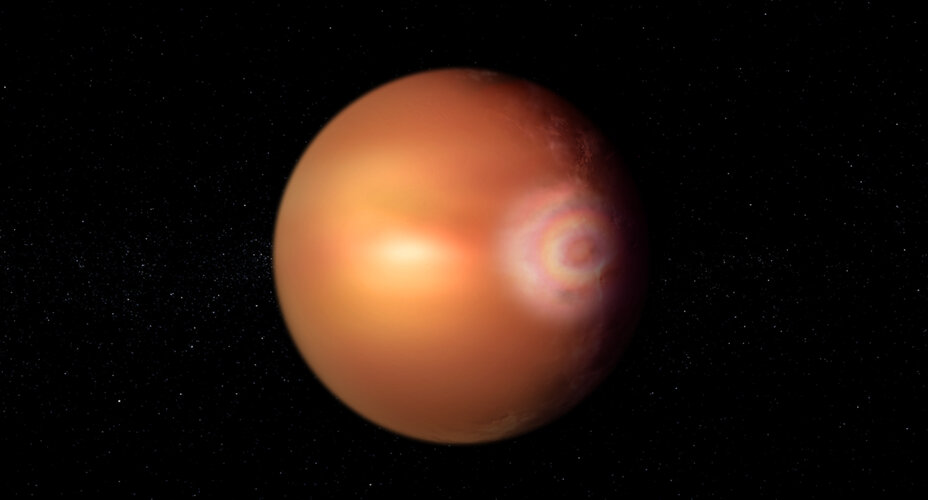
For the first time, potential signs of the rainbow-like ‘glory effect’ have been detected on a planet outside our Solar System. Glory are colourful concentric rings of light that occur only under peculiar conditions.
Data from ESA’s sensitive Characterising ExOplanet Satellite, Cheops, along with several other ESA and NASA missions, suggest this delicate phenomenon is beaming straight at Earth from the hellish atmosphere of ultra-hot gas giant WASP-76b, 637 light-years away.
Seen often on Earth, the effect has only been found once on another planet, Venus. If confirmed, this first extrasolar glory will reveal
Astro Chat with Pablo Álvarez Fernández | ESA Explores podcast
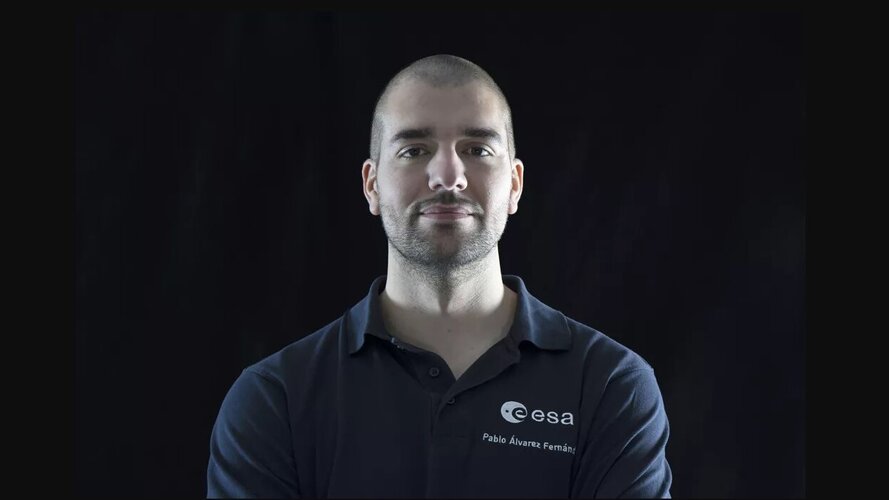 Video:
00:29:37
Video:
00:29:37
Pablo Álvarez Fernández, one of ESA's five astronaut candidates currently undergoing basic astronaut training at the European Astronaut Centre in Cologne, Germany, shares his experiences in astronaut training, his favourite lessons, and his view on the future of space exploration. Also, stay tuned to hear his favourite space-related quote and movie!
This is Episode 5 of our ESA Explores podcast series introducing the ESA astronaut class of 2022, recorded in November 2023.
Music and audio editing by Denzel Lorge. Cover art by Gaël Nadaud.
Earth from Space: Victoria, Australia
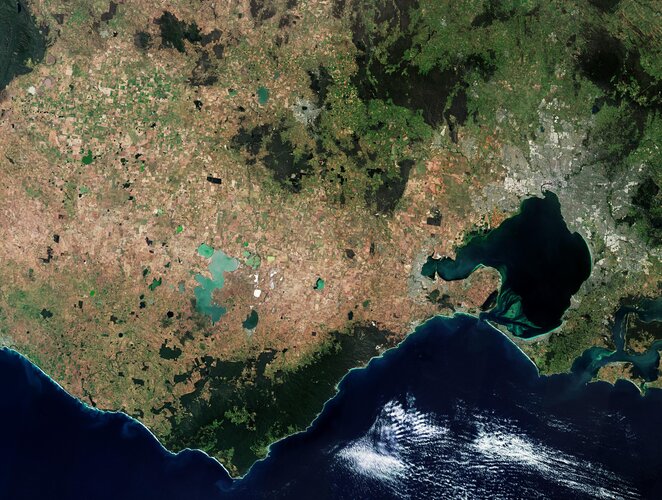 Image:
This Copernicus Sentinel-2 image features part of Victoria, a state in southeast Australia.
Image:
This Copernicus Sentinel-2 image features part of Victoria, a state in southeast Australia. A stellar role for ESA

Launched on 21 February 2024 on Apple TV+, new original series Constellation has gripped viewers with its mix of sci-fi and mind-bending mystery.
Total solar eclipse forecast: Will your city have clear skies Monday?

Some who hope to witness Monday's total solar eclipse may see the sun obscured by clouds instead of by the moon.
There's still plenty of time for forecasts to change, but meteorologists predict that eclipse day storms could blanket parts of the path, which stretches from Mexico and Texas through Maine and parts of Canada.
If clouds don't get in the way, viewers in the path wearing eclipse glasses will see the moon begin to slowly cover the sun until it is completely blocked, a period of darkness called "totality" during which temperatures drop and the sun's corona will be visible.
What's the forecast along the eclipse's path?
Clouds are expected in much of the eclipse's path Monday thanks to storms that are moving across the central U.S.
Is the universe really a 'dark forest' full of hostile aliens in hiding?

We have no good reason to believe that aliens have ever contacted Earth. Sure, there are conspiracy theories and some rather strange reports about harm to cattle, but nothing credible. Physicist Enrico Fermi found this odd. His formulation of the puzzle, proposed in the 1950s and now known as "the Fermi Paradox", is still key to the search for extraterrestrial life (SETI) and messaging by sending signals into space (METI).
The Earth is about 4.5 billion years old, and life is at least 3.5 billion years old. The paradox states that, given the scale of the universe, favorable conditions for life are likely to have occurred many, many times. So where is everyone? We have good reasons to believe that there must be life out there, but nobody has come to call.




